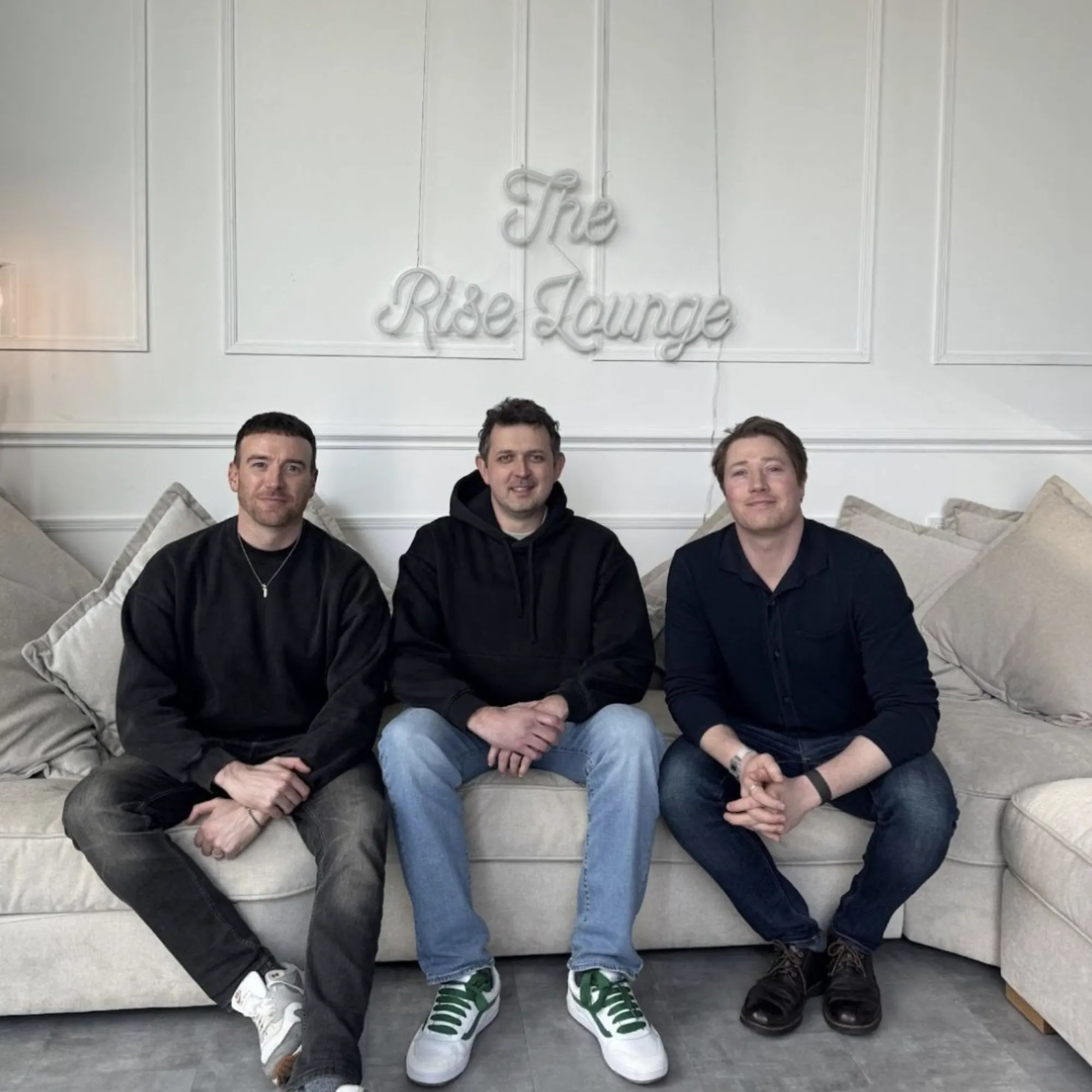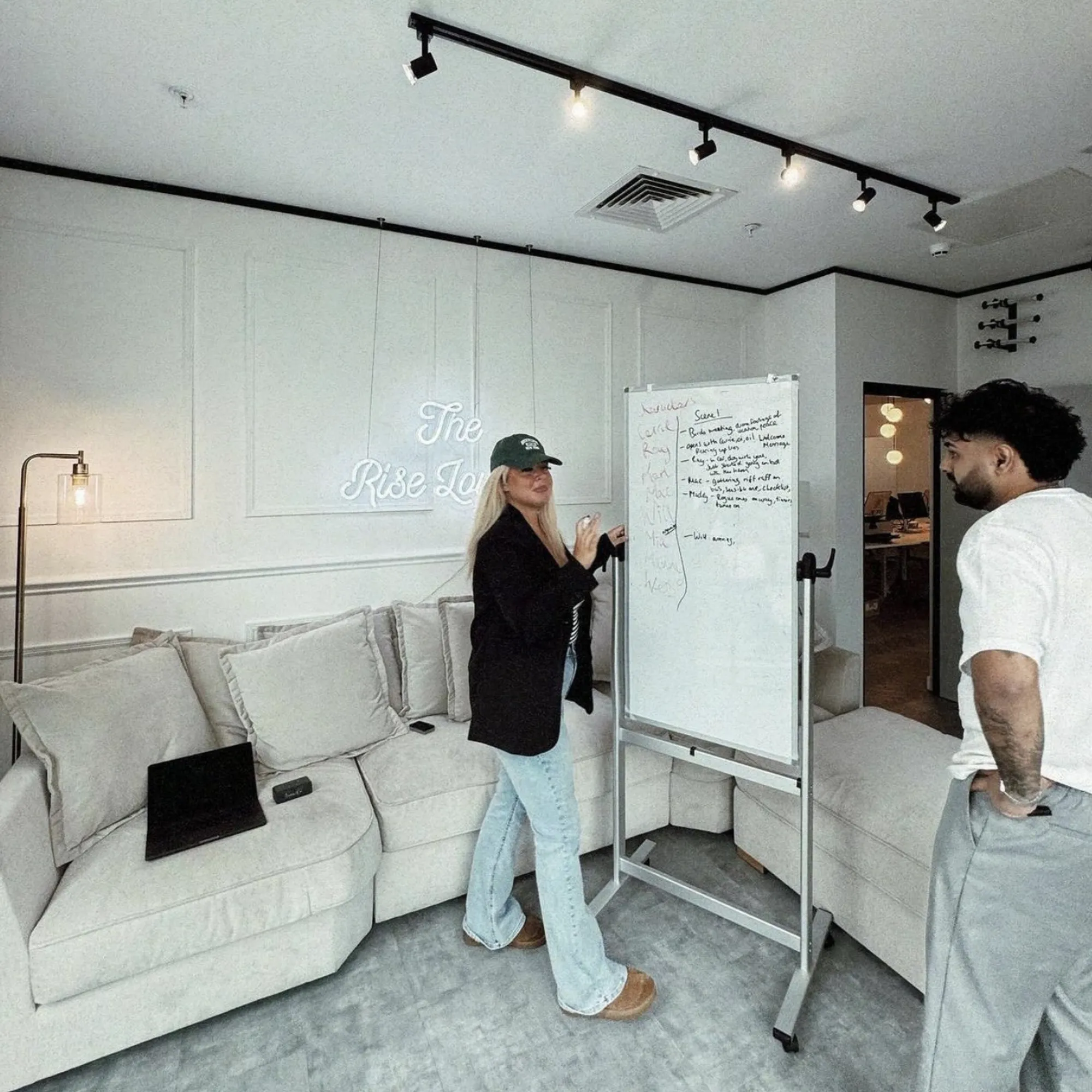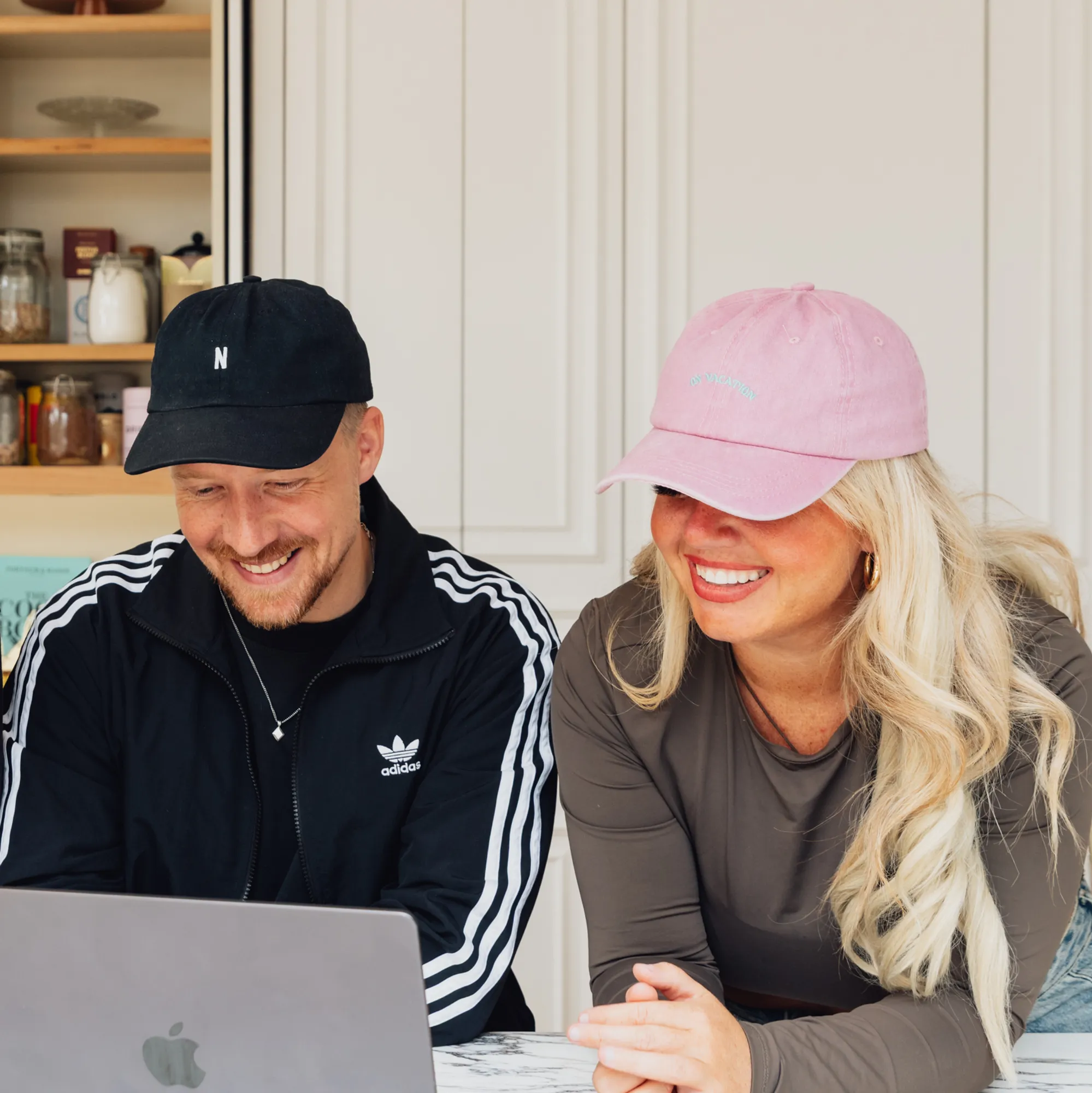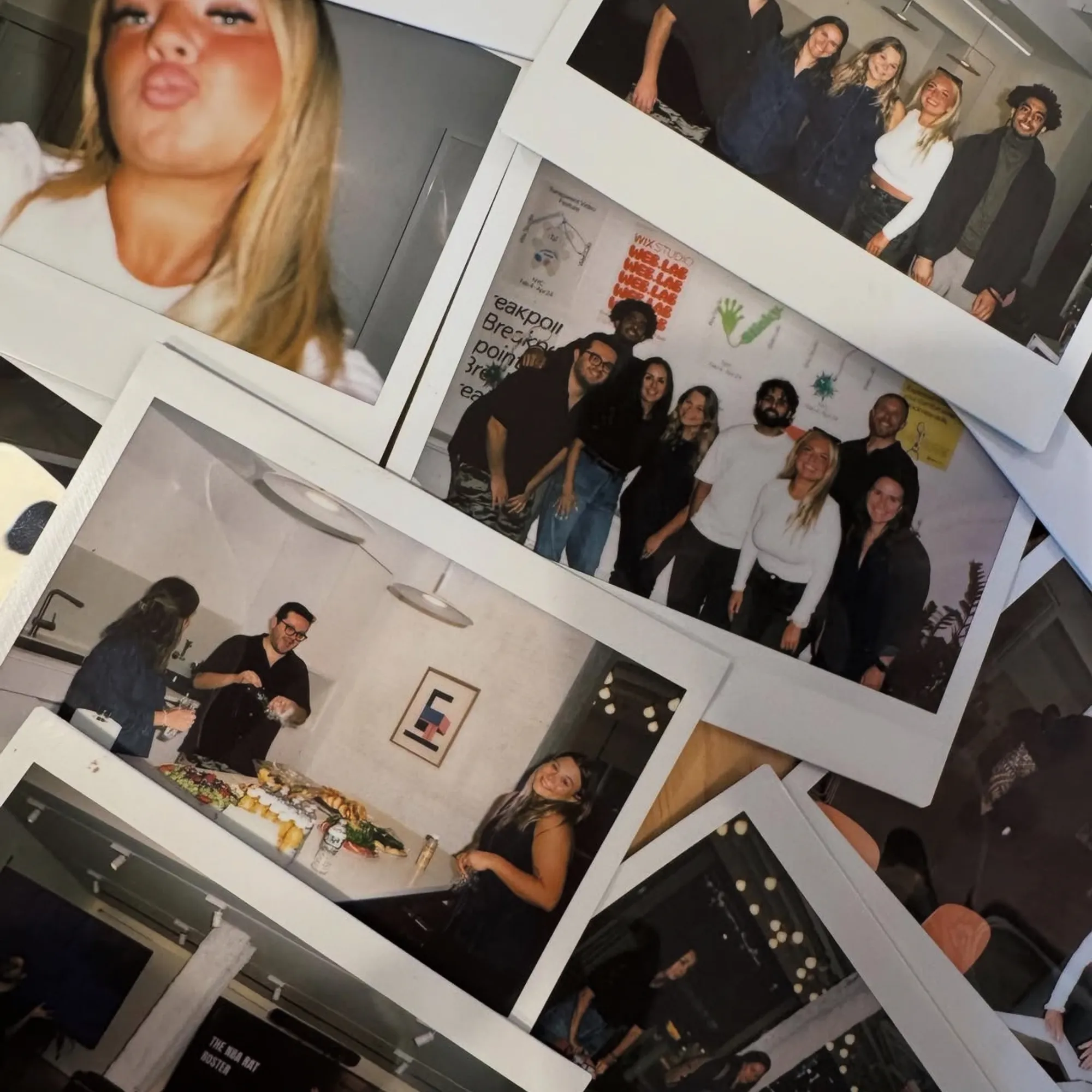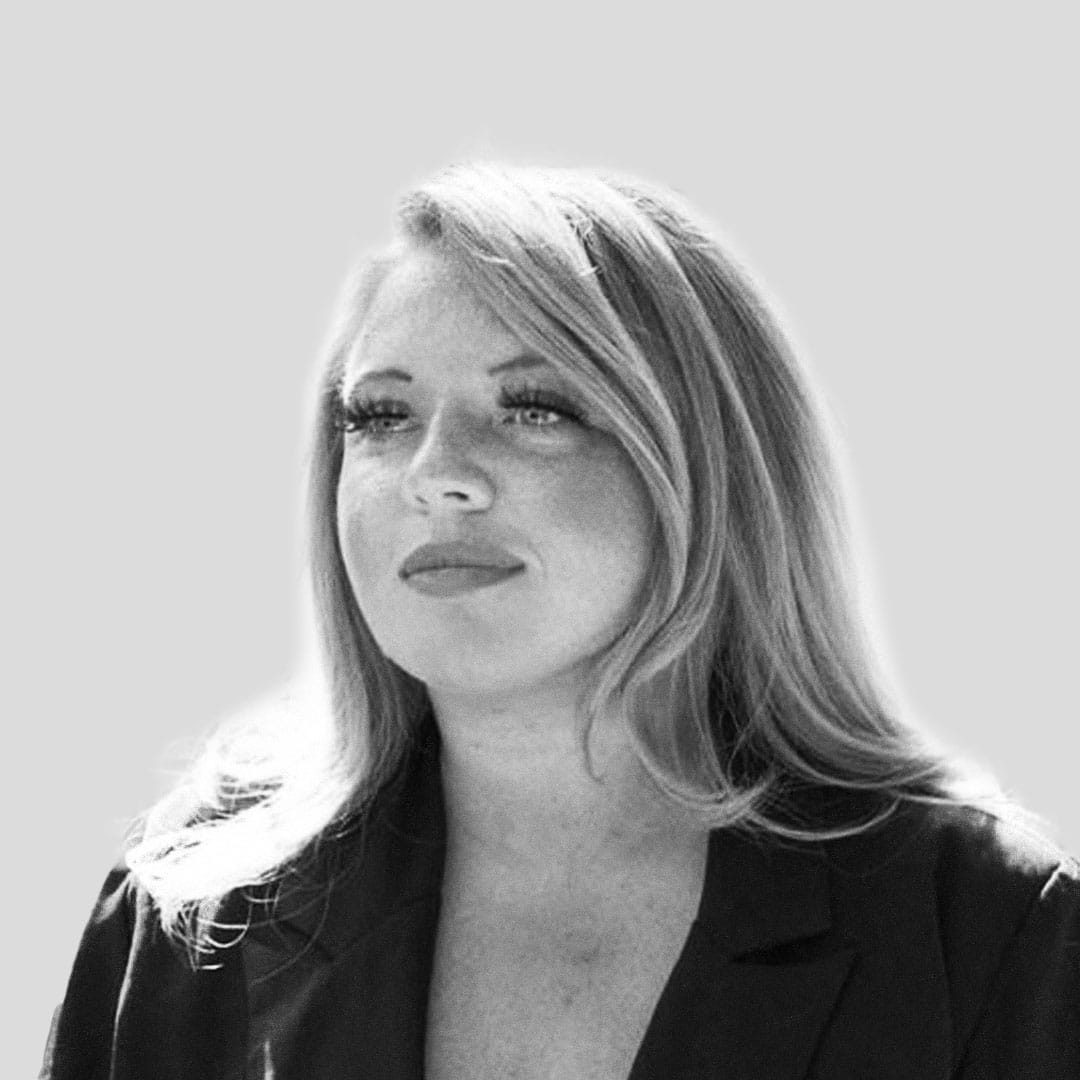
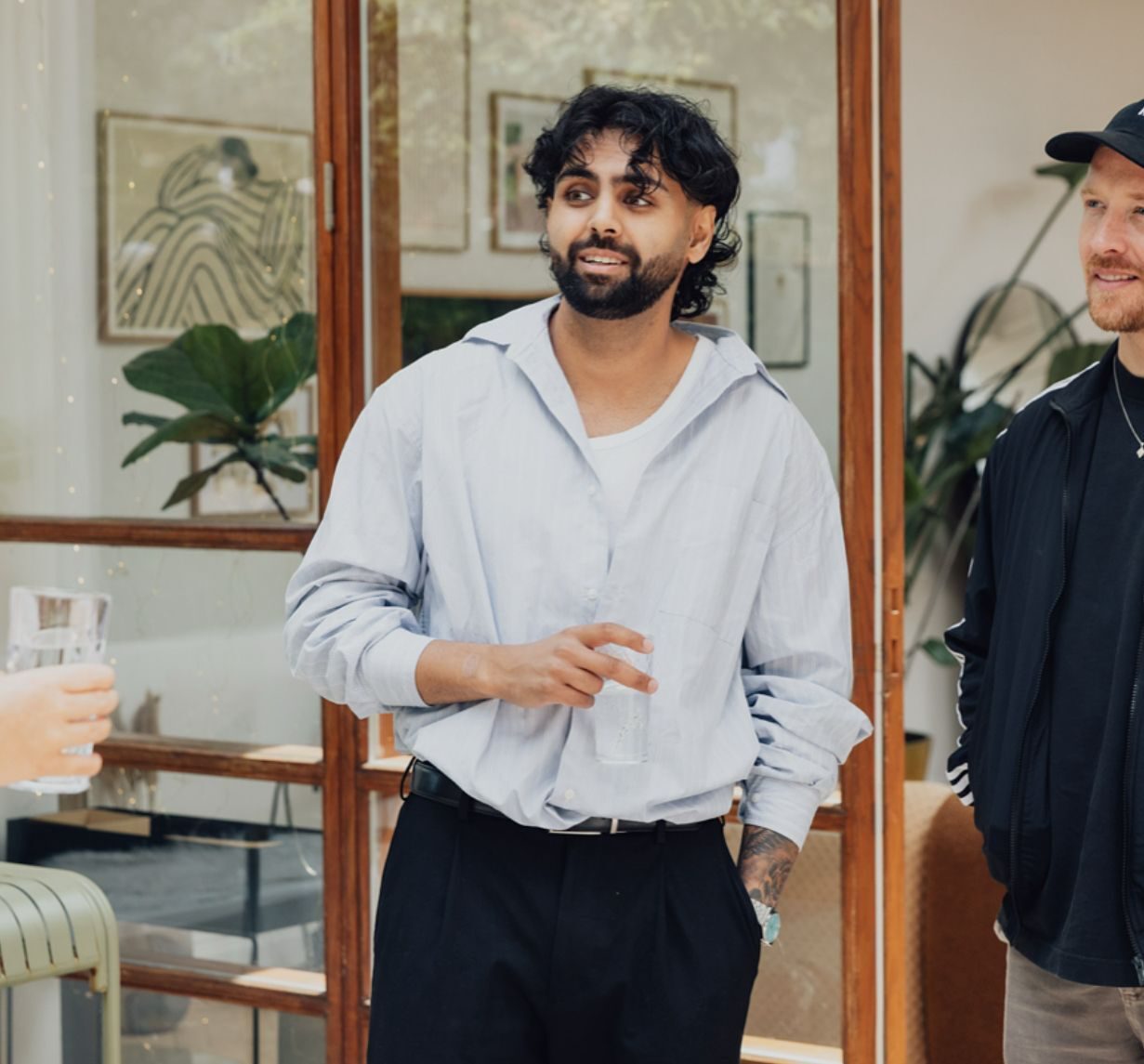
How people search in 2026... (a study of 1.5bn searches)

The SEO industry is spending $67bn every single year optimising for just ONE platform - Google.
And we’ve just analysed 1.5 billion searches and found if that's ☝️you, you’re missing out on 60% of the opportunity to be discovered.
The average consumer uses 3.6 platforms, and 97 interactions before buying and we’ve just mapped out 9000 of these search journeys
The State of the SEO market:
Globally, brands spend $74.9 billion every year on SEO.
And $67 billion of that - 90%+ - goes straight into one platform: Google.
But here’s the kicker.
A Rise at Seven study found that every other platform combined - TikTok, YouTube, Pinterest, Reddit, ChatGPT - only gets 10% of the budget… yet drives over 60% of discovery in a 2025/26 search journey.


The way people search has changed - dramatically.
FACT: Consumers now now bounce between 3.6 platforms before making a purchase, taking up to 10 weeks and as many as 97 interactions to complete their journey.
And yet, most marketers are still optimising for one engine.
The report
The Rise at Seven SEO & Data team analysed 1.5 billion searches across the most-searched keywords on the internet - spanning Travel, Fashion, Beauty, Tech & Electronics, Health, Automotive, Food, Gaming, Sport & Fitness, and Home & Garden - to uncover how people really discover and buy in 2025/26.
What we found?
Google’s total search share has fallen to 34.5%.
The rest belongs to YouTube (24%), TikTok (16.7%), and Instagram (20.9%) - the new kings of discovery taking up 60% collectively.
And yet, the SEO budget? Still 90% Google.
Too many brands are ignoring the platforms where exploration, evaluation and purchase now happens.
However thats starting to change...
Global search demand for non-Google SEO is skyrocketing YoY:
- LLM SEO ↑ 11,154% YoY
- TikTok SEO ↑ 171% YoY
- YouTube SEO ↑ 108% YoY
- Social SEO ↑ 99% YoY
- Instagram SEO ↑ 85% YoY
- ChatGPT SEO ↑ 80% YoY
- Pinterest SEO ↑ 50% YoY
- Reddit SEO ↑ 43% YoY
- Bing SEO ↑ 32% YoY
Those numbers say everything about where search is heading.
LLM SEO is up 11,154% year-on-year - proving that optimising for AI models like ChatGPT, Gemini, and Perplexity has gone from niche to non-negotiable. Marketers are finally realising that influencing how large language models “see” your brand is the new frontier of visibility.
At the same time, TikTok SEO (+171%), YouTube SEO (+108%), and Social SEO (+99%) are exploding - because discovery now starts on social not Google. The fastest-growing search engines are social.
Even platforms once considered secondary - Instagram (+85%), ChatGPT (+80%), Pinterest (+50%), Reddit (+43%), and Bing (+32%) - are all on the rise.
The takeaway? Search isn’t dying. It’s diversifying. Optimising for Google alone in 2026 is like running paid ads on one channel and calling it a strategy
Read the full report
How we've rebuilt SEO for the New Search Era
People now discover through TikToks, validate on Reddit, compare on publishers, and only then land on your site.
Even Google knows this - that’s why it’s pulling videos, discussions, and creators above traditional links.
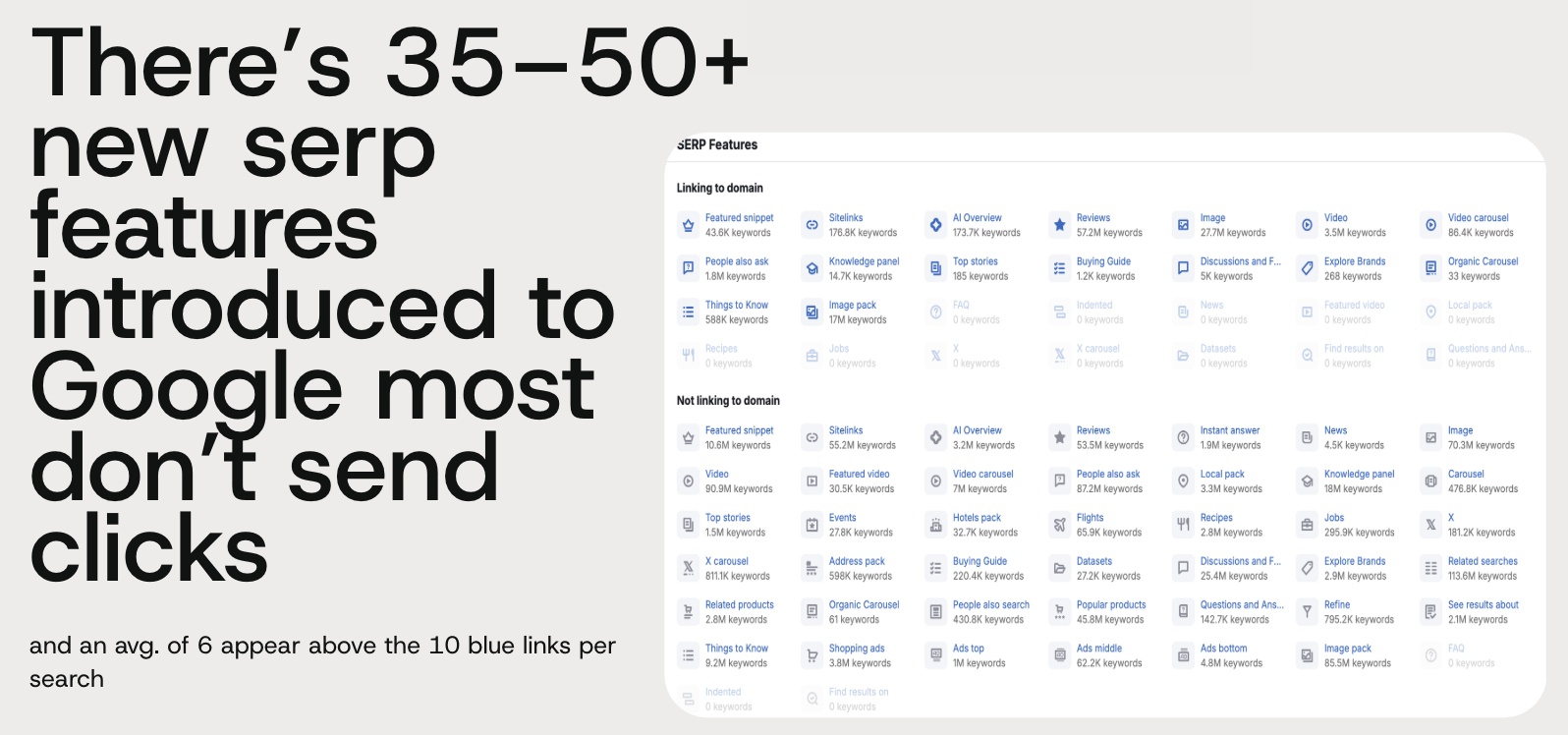
So at Rise at Seven, we rebuilt SEO for this world.
We turned it from a siloed channel into a multi-channel content engine that connects brand storytelling, creators, and organic discovery into one loop.
We call it Engineering Demand and Discovery.

From “Rank a Page” to “Own the Category”
Old SEO was about technical, content, and links.
Now that’s just good hygiene.
Growth today comes from Category Leadership - owning the entire conversation around what you sell, everywhere it’s being searched.
Because the brands who win are:
- The most searched for in their category (Demand)
- The most discovered in their category (Discovery)
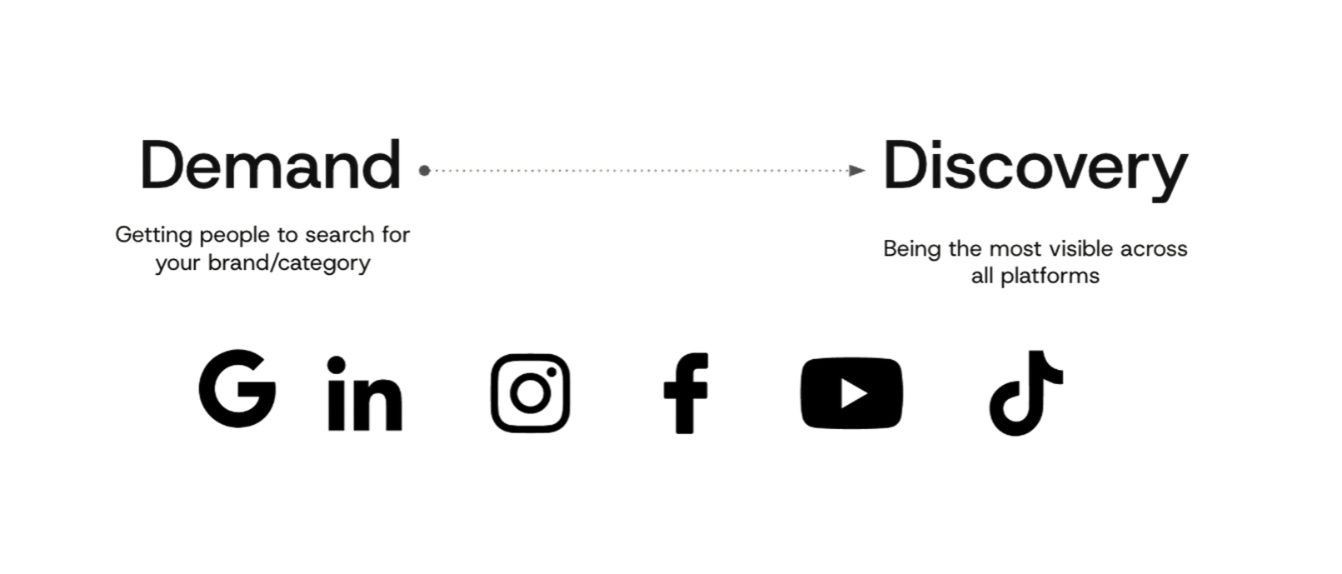
When demand and discovery work together, it’s game over.
Demand fuels discovery. Discovery fuels demand.
And that’s what builds Category Leaders.
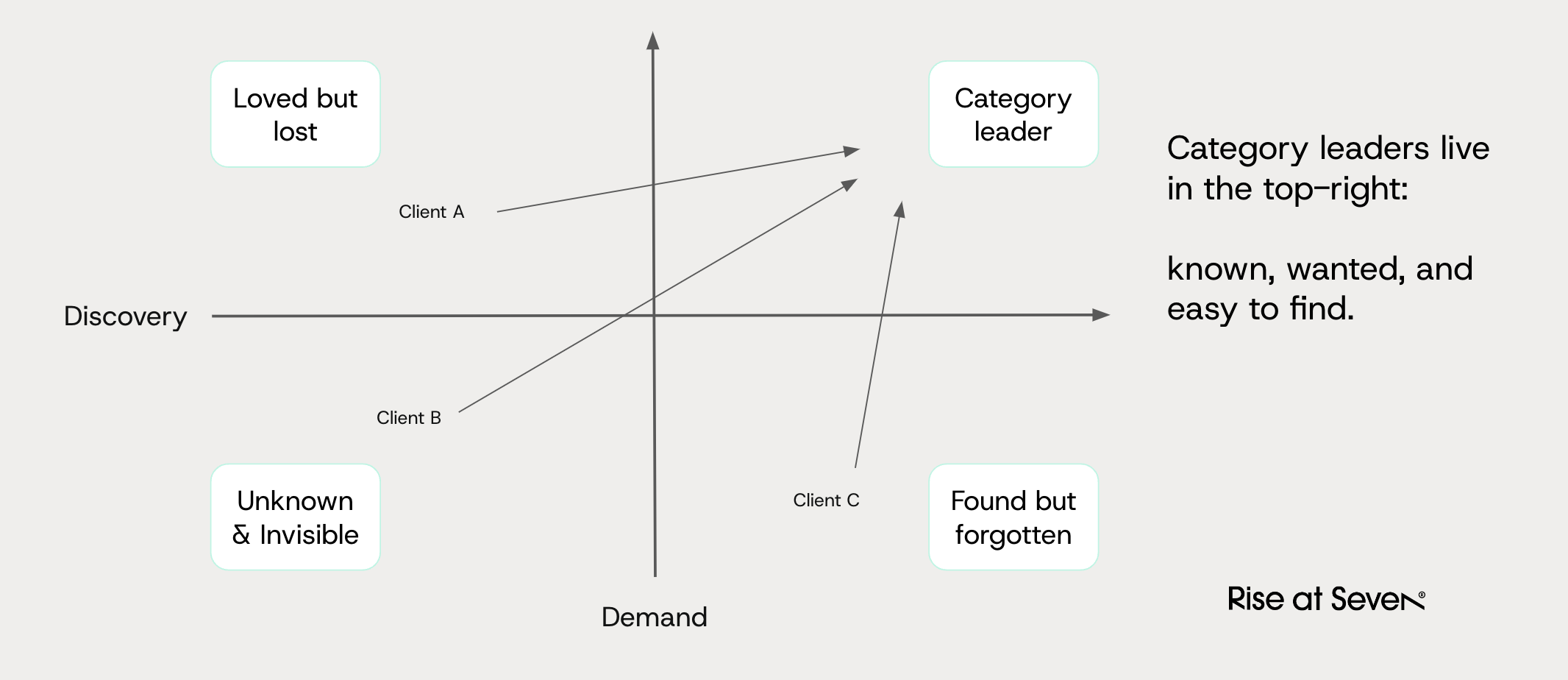
Framework visualised by Managing Partner of Craft at Rise at Seven, Phil Clark.
A bad ad, simply generates demand for the category leader. And this is happening in marketing all the time.
That’s why we start by diagnosing what you’re missing:
Are you the most in demand brand in your category (searched for alongside the category keywords)? (demand problem)
Are you the most visible in your category and easy to find? (discovery problem)
Once we know, we can engineer both.
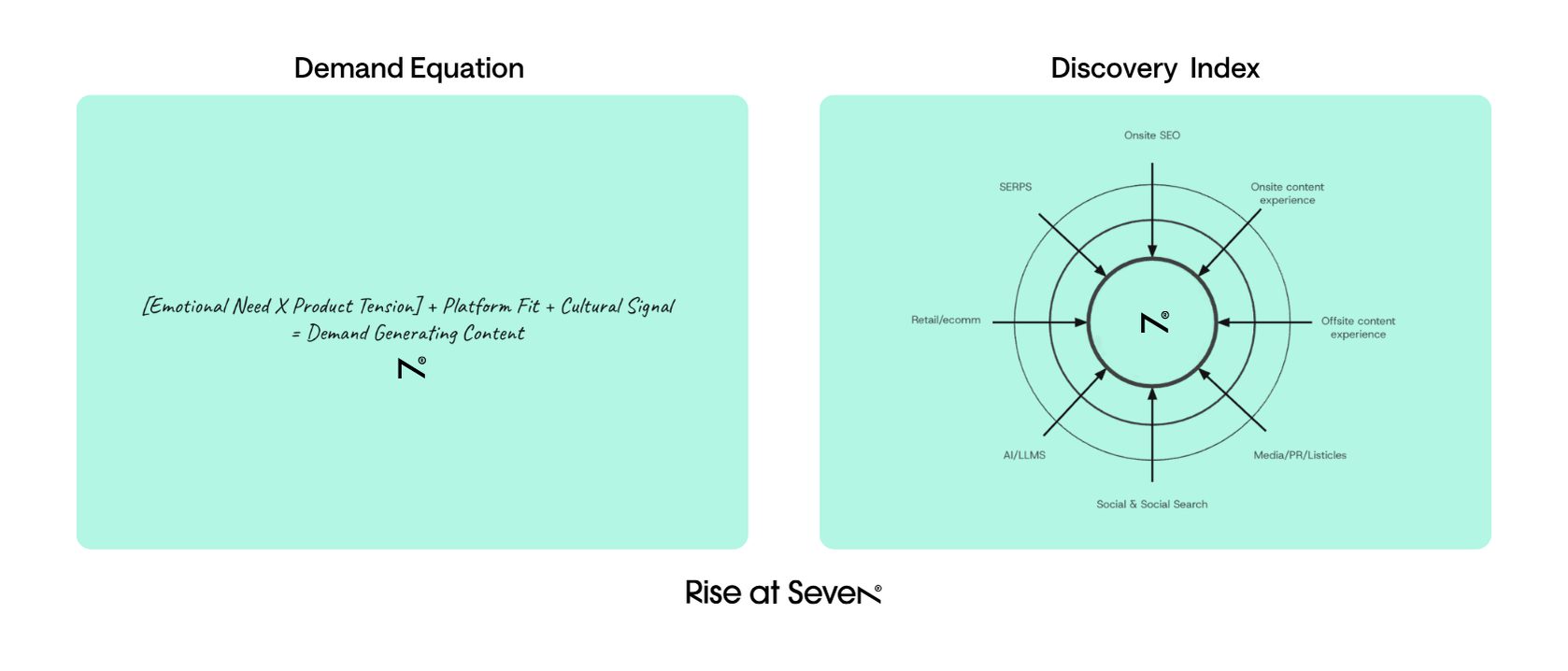
We use these two metrics to understand this: our demand equation, created by Our Social & Campaigns Director, Wes Hosie and the demand team here at Rise at Seven and our discovery index from our search and strategy team.
From Search vs Social → Engineering the Journey
People don’t search in silos.
They search in sequences.
They discover on TikTok → compare on Reddit → check price on Google → read a publisher review → watch a YouTube video → buy.
Google knows it. That’s why it’s integrating all surfaces into one journey.
Our job?
To map where intent lives in your category - and build connected content that shows up across every surface.
Because your audience doesn’t think “channel.”
They think journey.
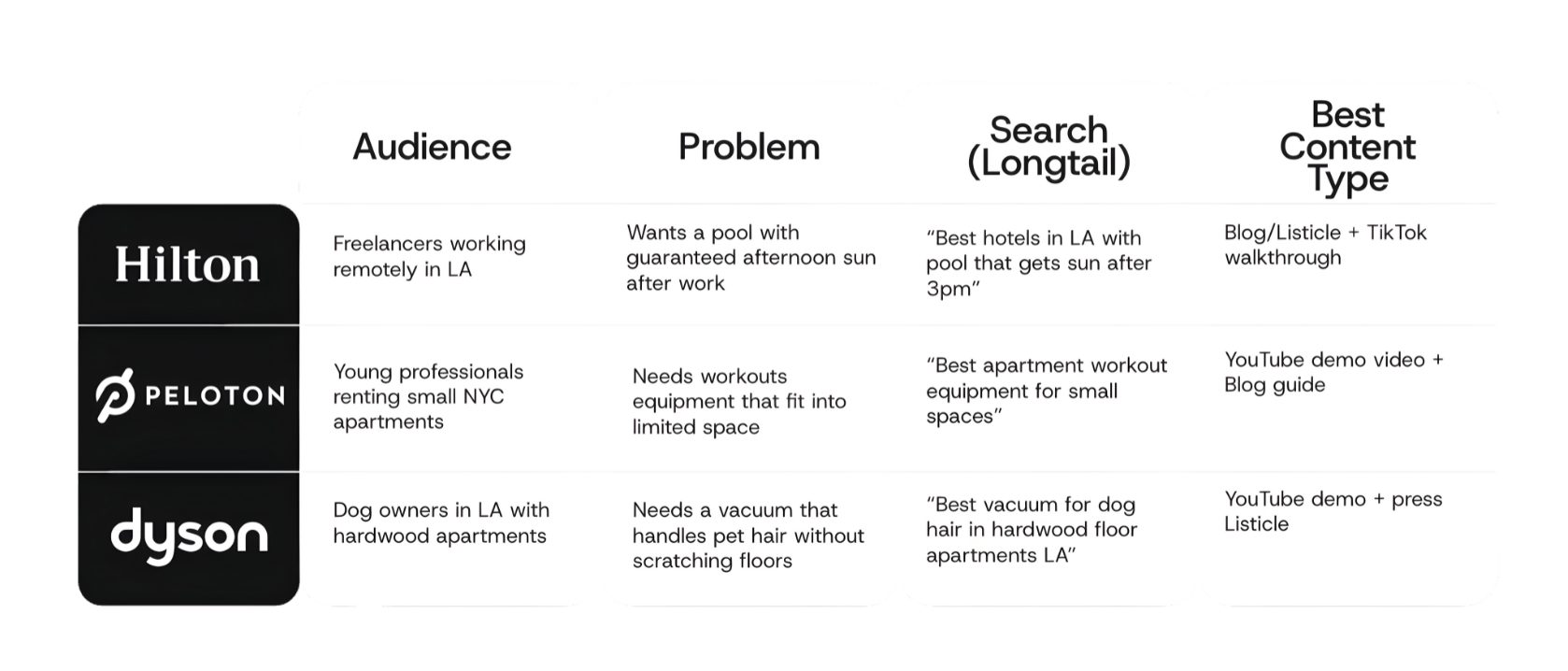
This process feeds your onsite content in a structure we call modular content
From here you can create and distribute different offsite in different formats:
- Short-form video optimised for both platform SEO and Google indexing, creators who speak to audience intent and signal relevance through captions, entities, and hooks.
- Press from being featured in listicles and round-ups regarding the search to injecting yourself into the conversation using a campaign you need to be seen in the press
- Communities and discussions that show genuine experience and are surfaced in “forums and discussions” modules.
At Rise at Seven, we design for loop mapping and where intent lives per category, then build connected content across every surface.
If your audience starts on TikTok, checks publishers, and ends on Google, we make sure you’re the through-line across all three.
Brand Signals Move Rankings (and Revenue)
What really moves the needle today isn’t just on-site optimisation — it’s brand and category authority.
Creator reach.
Branded search volume.
Media coverage.
Mentions in publishers.
All alongside category semantic signals
These are the new ranking signals for both Google and AI.
When your brand is cited, shared, and discussed - alongside audience problems and category solutions - you show up more, rank higher, and convert faster.
That’s why we built Organic Media Planning - syncing PR drops, creator pushes, and content campaigns to hit right when demand peaks.
The result: your brand dominates the conversation and the rankings.
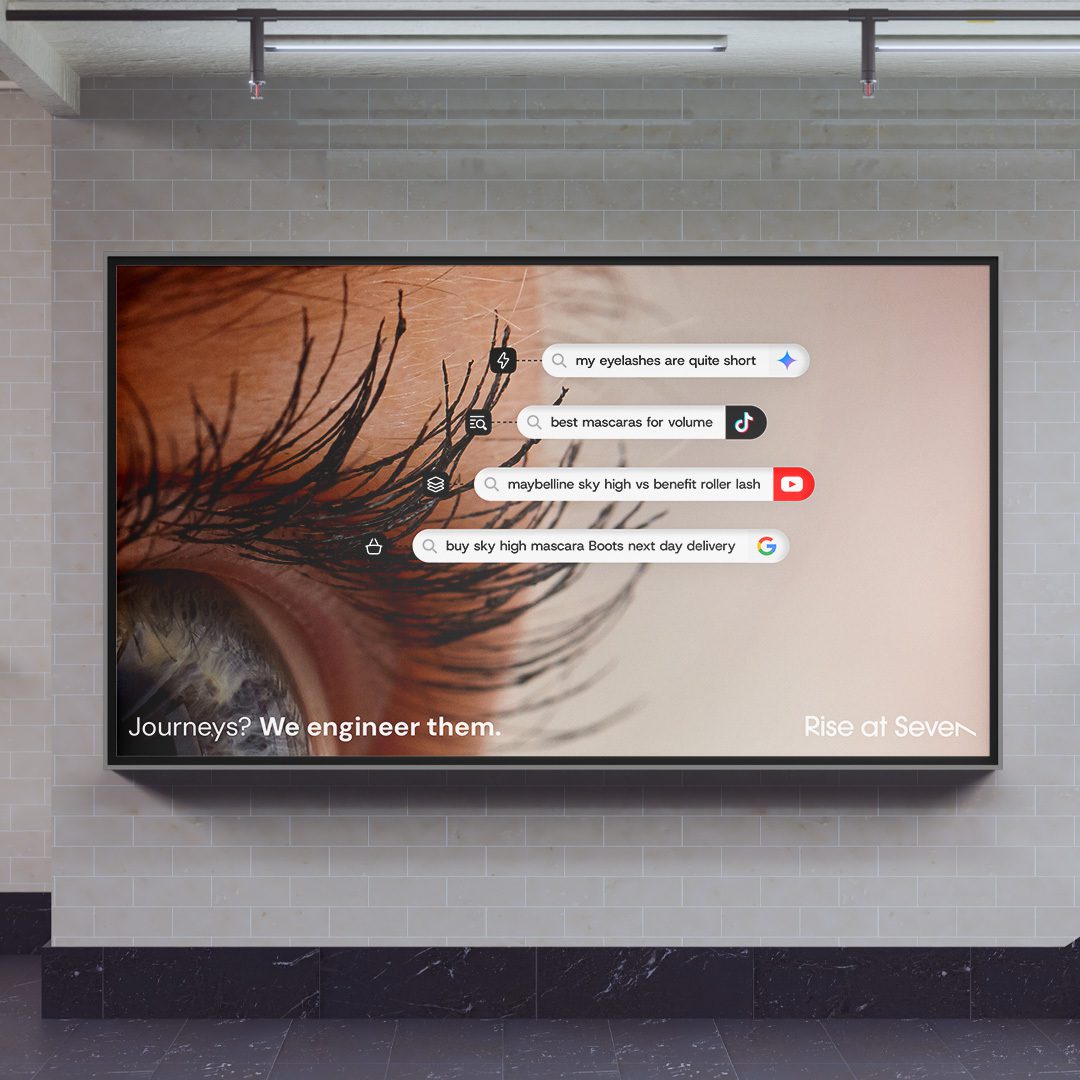
What It Looks Like in Practice
Parkdean Resorts
We mapped every surface where holiday intent lives , Google, TikTok, YouTube, publishers and built a content engine to fill them all. Real creators, real experiences, and PR hooks that earned coverage.
Result: 266% increase in visibility, features in AI overviews, and consistent #1s for competitive terms like Easter breaks.
Ninja
We helped Ninja turn from product to category. PR, creators, and optimised content meant “air fryer” became synonymous with “Ninja.”
Result: #1 for “air fryer,” 59.5K extra monthly clicks, £41K in one day, and visibility across both Google and TikTok.
Pooky
We made “rechargeable lights” a thing a renter’s dream solved through creator tutorials, PR, and targeted content.
Result: +4,496% search demand, #2 ranking (above Amazon), +23% YoY revenue.
Interflora
We connected PR and on-site content to dominate Father’s Day.
Result: +63% demand, #1 ranking at the peak, and 2,000+ new customers in a week.
Want help engineering your customers' journey? Get in Touch.

Ray Saddiq is a leading voice in the world of Marketing SEO and social media known for connecting the dots between how people search and how they scroll. As Head of Marketing at Rise at Seven, he’s pioneered approaches that treat platforms like TikTok, Pinterest, and Instagram not just as content channels but as search engines.
